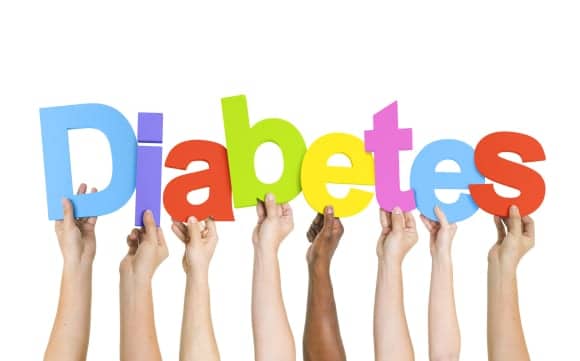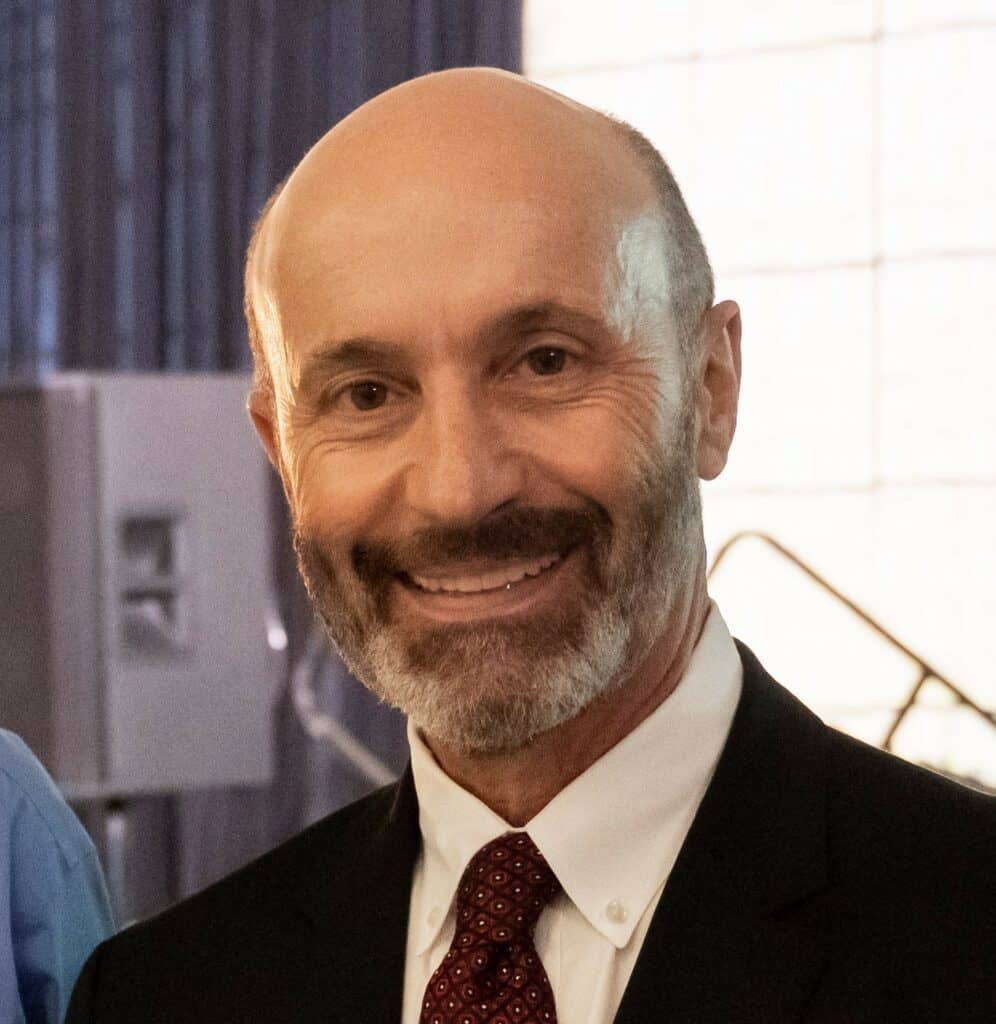Inside the Research | December 2021 Hearing Review
By Douglas Beck, AuD
Kathy Dowd, AuD, has been an audiologist for nearly four decades with a wide range of experience, ranging from educational audiology at local and state levels to working with ENTs in private practices and clinics. For the past 5 years, she has worked to raise awareness about chronic diseases and ototoxic medications that cause hearing loss. In April 2016, Dr Dowd and colleagues involved in The Audiology Project (TAP) helped prompt the Centers for Disease Control (CDC) to consider a recommendation for hearing testing to be included in the patient guide, Take Charge of Your Diabetes.1 Last year the the American Diabetes Association (ADA) recognized hearing loss in its referral criteria for initial diabetes care management in its Standards of Medical Care in Diabetes-2021.2
Beck: Hi Kathy! Thanks for your time today.
Dowd: Hi Doug. Thanks for the invitation.
Beck: Before we get into the topics du jour, would you please tell me about The Audiology Project? When did it start and what are its goals?
Dowd: Absolutely. The whole idea started with a family member’s diagnosis of diabetes over 10 years ago. As I went online to search for information related to hearing and listening deficits associated with diabetes, I found many research articles about hearing loss and diabetes in the literature. I reached out to CDC in 2011 and found they also were unaware of the link between diabetes and hearing loss.
Once CDC began to create information on hearing loss in diabetes care, I assembled a stakeholder meeting of Audiology Associations in 2016 and formed TAP, a 501c3 nonprofit organization. Our mission is to raise awareness of the link between chronic diseases and hearing and balance disorders. We work in collaboration with the American Academy of Audiology (AAA), the Academy of Doctors of Audiology (ADA), and the American Speech, Language and Hearing Association (ASHA).
Beck: I should note that when people visit your website, they’ll be able to review the Board of Directors, the local contacts across the USA, Canada, India, Pakistan, South Africa, and the United Kingdom. Additionally, you have quite a few articles and fact sheets, including the PDF, “What You Need to Know About the Hearing and Vestibular Consequences of Diabetes.”3 Can you briefly review this?
Dowd: Sure. That article by Erin Piker, PhD, and colleagues is a quick and easy read. It points out that hearing loss is twice as common in persons with diabetes compared to control groups. Animal models of diabetes consistently demonstrate cochlear and auditory nerve deficits. Additionally, human temporal bone studies have provided consistent evidence of pathologic changes related to diabetes. Essentially, the same microvascular changes which lead to nephropathy and retinopathy in diabetic patients most likely lead to damage in the microstructures of the cochlear.
Persons with diabetes should have their hearing checked. CDC now recommends a comprehensive audiological evaluation for all patients upon diagnosis of diabetes to establish a baseline, to enable early identification, and provide education, prevention, and management strategies.4
Hearing loss is more common in diabetic patients and detracts from their ability to detect, identify, and localize sounds. It compromises communication, and makes them more susceptible to social isolation, fatigue, and it diminishes quality of life. It also increases their risk for falls, depression, anxiety, cognitive decline/dementia, and hospitalization.
The bottom line is diabetes and hearing loss is an extremely important issue every hearing healthcare professional and persons with diabetes need to know about.
Beck: Kathy, with regard to “listening is where hearing meets the brain,”5 the idea is that to communicate well—to maximally understand speech in quiet and speech in noise—one must not only hear well (ie, perceive/detect sounds) but also be able to listen well. That is, one must be able to attribute meaning to sounds, to untangle the auditory neural code into meaningful percepts. In fact, the ability to attribute meaning to sound is a uniquely human ability. So, with that as background, I’m curious about your observations regarding some licensed professionals offering aural rehabilitation, or perhaps cognitive therapy or cognitive rehabilitation, in the absence of a complete audiometric evaluation?
Dowd: In my view, this has become a very important issue audiologists have to address. In particular, we must reach out to speech language pathologists (SLPs) and speech therapists who sometimes conduct speech, language, and cognitive evaluations without a comprehensive audiological evaluation or a hearing screening. These activities have been reported to occur in preschools and especially in skilled nursing facilities.
ASHA has SLP guidelines for child and adult hearing screenings. However, the only assurance of compliance is for state licensing boards to mandate that SLP and speech therapists screen hearing before any speech, language, or cognitive evaluation and treatment. The North Carolina Board of Examiners for SLPs and Audiologists is in the process of changing their licensing rules with this mandate. A comment period will be open to allow interested professionals to weigh in on this important matter (visit https://ncboeslpa.org/announcement/hearing-screening-in-speech-language-evaluation-proposed-rule/).
For audiologists, we need to go beyond the traditional hearing test for persons with diabetes or other chronic diseases. Acoustic reflexes (ipsi and contralateral), ABR, auditory processing disorder (APD) tests, speech-in-noise tests, and more, can reveal problems associated with suprathreshold listening disorders even in people with normal or near-normal thresholds. It’s prudent to establish a baseline for the audiometric analysis of each patient, and often we find that these comprehensive tests reveal information that is otherwise undetectable.
I recommend people diagnosed with diabetes and other chronic diseases and disorders undergo comprehensive audiometric testing—not just simple air-conduction threshold testing. To be clear, comprehensive audiometric testing is within our scope of practice and represents best practices. There is a medical need to perform these audiology tests, as diabetes causes disruption of the microvascular and neural systems in the ears and the brain.
Beck: It must really be frustrating when you hear licensed professionals say, “I can tell when patients need a hearing test.”
Dowd: Doug, it is impossible to know when someone has a hearing or listening problem without a valid, objective, comprehensive audiometric evaluation. Hearing loss is invisible, and suprathreshold listening disorders and APDs are not even on anyone’s radar as a hearing issue! Hearing loss is a silent epidemic in the United States with only 20% of persons with hearing loss being referred or tested.
I know you and your colleagues6,7 have written about how there are 38 million people in the United States with hearing loss on an audiogram and another 26 million people with no audiometric hearing loss who present with hearing difficulty and/or speech-in-noise problems. In other words, people may or may not have hearing loss on an audiogram, but they certainly can have substantial listening problems without changes in their pure-tone thresholds. Again, hearing loss and suprathreshold-related listening disorders [like diabetes and progressive hearing loss] are not silos; they can coexist and change independently.
Beck: Exactly. Best practices by ASHA and AAA8-10 pretty much say the same thing every medical student is taught: diagnosis first, treatment second. A complete audiometric evaluation includes measures of air conduction, bone conduction, recorded speech audiometry, tympanograms, reflexes, speech in quiet, speech in noise, and a listening or communication assessment (eg, COSI, HHIE, IOI, SSQ, etc).
Dowd: Of course, if we could tell the test results without doing the tests, we wouldn’t need or perform the tests. So back to your question, with regard to anyone saying “I can tell when the patient needs a hearing test,” it’s just not correct. One-on-one, face-to-face in a quiet exam room, it is impossible to know if the child or adult has a hearing loss. And even after we know the type and degree of hearing loss and their diagnosis, we must monitor children, adults, and seniors—particularly those in nursing homes and residential care facilities and special schools, because their hearing loss is likely to change over time.
How could a parent, a counselor, a schoolteacher, or an SLP be expected to know if a child has a ski-slope loss, a cookie-bite audiogram, or even a unilateral dead ear? Most of the people with these hearing problems—and many others—can often converse and respond appropriately in quiet one-on-one situations. Further, as you know, millions of children in schools and millions of adults in skilled nursing facilities have suprathreshold listening disorders, such as APD, auditory neuropathy, cochlear synaptopathy, hidden hearing loss, traumatic brain injury, dyslexia, ADD, and ADHD. For adults and older adults, we need to consider that untreated hearing loss is the most significant modifiable risk factor for dementia.11
Beck: My friend and colleague, Piers Dawes, PhD, published an article in ENT & Audiology News12 in which he said hearing loss is more common in people with dementia as compared to the general population, and 90% of people diagnosed with mild-to-moderate dementia have hearing loss greater than 40 dB HL. Hearing loss is associated with poorer cognitive function when left untreated, and most people with dementia do not have their hearing needs addressed, diagnosed, or managed by caregivers or hearing care professionals.
Dowd: Yes, it’s also quite possible there are people who test as cognitively impaired who have been misdiagnosed because their underlying hearing loss is not identified and treated first.
Beck: And for the reader without an audiology background, I want to emphasize that a “hearing screening” is not at all the same thing as a comprehensive audiometric evaluation. A screening pass/fail check approximates the detection ability of the ears based on loudness and pitch, often based on sounds which don’t exist in nature (ie, pure-tones). More importantly, the ability to understand or make sense of speech, or speech-in-noise, is not tested in hearing screenings.
Dowd: From my perspective, it’s clear that if any health professional is to engage with a patient for rehabilitative purposes, such as to provide language or cognitive or psychological screening or therapy, Step 1 is to acquire a complete comprehensive audiometric evaluation and an APD test by an audiologist. Both the CDC and the American Diabetes Association recommend a baseline audiometric evaluation when someone is diagnosed diabetes, and annually thereafter.
Beck: I have to agree. And I think we need to re-evaluate our 50+ year old hearing screening protocols with regard to hearing, listening, data collection, speech-in-quiet, speech-in-noise, and of course, clinical outcomes. Personally, I think hearing screenings—with the sole exception of universal newborn hearing screenings—have never served patients as well as we might like. Clearly, one can pass a traditional hearing screening while having substantial hearing and listening problems. I think pure-tone hearing screenings tend to give patients a false sense of security.
Of course, when people read that I don’t recommend hearing screenings—after 38 years as an audiologist —they tend to ask what I do recommend? My answer has always been the same: a complete audiometric evaluation based on the guidelines from AAA and ASHA. When we do less, we know less.
Thanks Kathy. It is always a joy to spend time with you! Thanks for all of your work on The Audiology Project, and thanks for sharing your thoughts about rehab protocols.
Dowd: Thanks Doug. Glad to spend the time with you too, and thanks for your interest in our work.
References
- Centers for Disease Control and Prevention (CDC). Take charge of your diabetes. January 20, 2021. Available at: https://www.cdc.gov/diabetes/library/factsheets/diabetes-and-medicine.html
- American Diabetes Assn. Introduction: Standards of Medical Care in Diabetes—2021. Diabetes Care 2021 Jan; 44(Supplement 1): S1-S2. Available at: https://doi.org/10.2337/dc21-Sint
- Piker EG, Spankovich C, Romero DJ, Memering CE, Pierantoni JA. What You Need to Know About the Hearing and Vestibular Consequences of Diabetes. ADCES. 2020 [Sept];. Available at: https://static1.squarespace.com/static/5b7deefb1aef1dc9d406b2e8/t/5f52eede5ff56448e951280b/1599270634638/What+you+need+to+know+ADCES+9.2020.pdf
- Centers for Disease Control and Prevention (CDC). Diabetes and hearing loss. July 22, 2021. Available at: https://www.cdc.gov/diabetes/managing/diabetes-hearing-loss.html
- Beck DL, Flexer C. Listening is where hearing meets brain…in children and adults. Hearing Review. 2011;18(2):30-35. Available at: https://hearingreview.com/practice-building/practice-management/listening-is-where-hearing-meets-brain-in-children-and-adults
- Beck DL, Danhauer JL. Amplification for adults with hearing difficulty, speech in noise problems – and normal thresholds. J Otolaryngol ENT Res. 2019;11(1):84-88. DOI: 10.15406/joentr.2019.11.00414
- Beck DL, Danhauer JL, Abrams HB, et al. Audiologic considerations for people with normal hearing sensitivity yet hearing difficulty and/or speech-in-noise problems. Hearing Review. 2018;25(10)[Oct]:28-38. Available at: https://hearingreview.com/hearing-loss/health-wellness/how-to-react-to-the-uspstfs-apathy-on-hearing-screening
- Valente M, Bentler R, Kaplan HS, et al. Guidelines for hearing aid fittings for adults. Am J Audiol. 1998 [Mar];7:5-13.
- Valente M, Abrams H, Benson D, et al. Guidelines for the Audiologic Management of Adult Hearing Impairment. 2006. Available at: https://audiology-web.s3.amazonaws.com/migrated/haguidelines.pdf_53994876e92e42.70908344.pdf
- Valente M, Barninger KH, Oeding K, et al. American Academy of Audiology Clinical Practice Guidelines: Adult Patients with Severe-to-Profound Unilateral Sensorineural Hearing Loss. June 2015. at: https://www.audiology.org/sites/default/files/PractGuidelineAdultsPatientsWithSNHL.pdf
- Livingston G, Huntley J, Sommerlad A, et al. Dementia prevention, intervention, and care: 2020 report of the Lancet Commission. Lancet. 2020 [Aug 8]; 396(10248):413-446.
- Dawes P. Addressing the hearing needs of people with dementia. March 3, 2021. Available at: https://www.entandaudiologynews.com/features/audiology-features/post/addressing-the-hearing-needs-of-people-with-dementia
About the author: Douglas L. Beck, AuD, is the Vice President of Academic Sciences at Oticon Inc, Somerset, NJ. He has served as Editor in Chief at AudiologyOnline and as Web Content Editor for the American Academy of Audiology (AAA). Dr Beck is an Adjunct Clinical Professor of Communication Disorders and Sciences at the State University of New York at Buffalo, and also serves as Senior Editor of Clinical Research for The Hearing Review’s Inside the Research column.






An “ear opening interview on the need to understand the basic loss of hearing due to diabetes”! I am taking the initiative to recall my patients and verify the presence/absence of a diabetes diagnosis by MD involvement and not just symptoms. I am very aware of cognitive deviations that take place with inconsistencies that are not noticed with the presence of other diseases. And, it may be difficult to link the symptom with a disease!